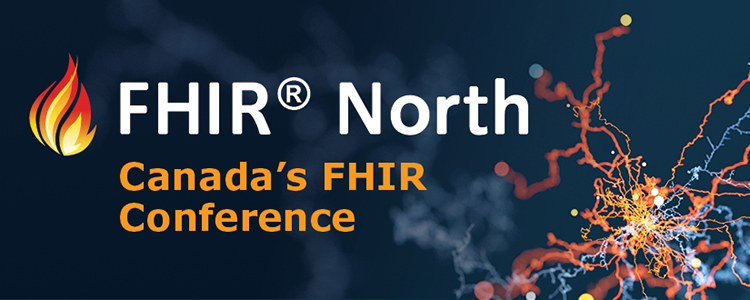
I had the honour of presenting at the 2020 FHIR North Conference. My topic was on FHIR & DICOM, where I began by giving a formal introduction to DICOM as it is used in medical imaging, then segued into how DICOM integrates with FHIR to compliment the patient record – marrying images with clinical records. The session also covered basic interactions between FHIR and DICOMweb to query for and retrieve imaging studies. For those of you with a conference pass, you can view my recorded presentation here: https://pheedloop.com/fhirnorth2020/virtual/?page=sessions§ion=IcWqet
In addition to presenting, I was able to attend a number of sessions at the conference. Here is a list of some that I found particularly interesting:
- James Agnew’s Intro to FHIR: James is a very engaging speaker and this talk informative while also being easy to follow. Highly recommended for those new to FHIR.
- Opening Keynote: Advancing Interoperability for the Public Good: Didi Davis talked about the Sequoia Project leading the development of a framework to bridge old and new technologies and ease the transition.
- Ontario’s COVID Response: This presentation covered a number of topics related to Ontario’s COVID-19 efforts, but I was intrigued by how the online portal, where individuals can retrieve their COVID-19 test results, was constructed using FHIR and Ontario Laboratories Information System (OLIS).
- International Patient Summary – Ready for Prime-time: Gave an enlightening overview of the IPS, a health record extract, comprising a standardized collection of clinical and contextual information (retrospective, concurrent, prospective) that provides a snapshot in time of a subject of care’s health information and healthcare.
- Structured Data Capture (SDC): A topic I have been intermittently following ever since I came to know about it when Alex Goel did a project related to it at the SIIM Hackathon, based on his experience at Cancer Care Ontario. On a related note, Alex was featured in a SIIMcast podcast episode that you can find here: https://siimcast.libsyn.com/synoptic-reporting-with-alex-goel
- Modernizing Data Submissions in Home and Continuing Care Sector: Talked about how Canadian Institute for Health Information (CIHI) has embarked on modernizing its data collection system to leverage the HL7 FHIR standard to provide a unified specification for submission of interRAI data.
